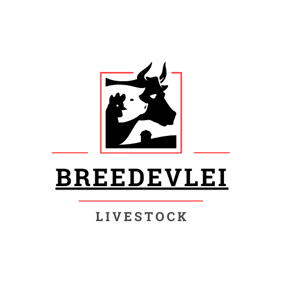Beef Production
Beef Production in South Africa
Beef production in South Africa has a rich heritage, with cattle being used in the past and even today for different reasons in various cultures throughout the country. Production takes place almost across South Africa, with different breeds being suited to different climatic conditions and areas.
There is also a large variety of farmers, ranging from subsistence to large commercial producers and breeders.
Beef Cattle Digestion
Cattle in South Africa belong to a class of animals that are known as ruminants, because they have four compartments to their stomach and chew their cud. The Beef Cattle digestive system allows ruminants to digest forages that single stomach animals, such as poultry or swine, and humans are unable to digest. To feed beef cattle efficiently, a farmer needs to understand the digestive process.
When the cow first eats, it chews its food just enough to swallow it. The food then travels to the first two stomachs, namely the rumen and the reticulum.
The rumen is the largest compartment of the cattle’s stomach and is filled with billions of bacteria, protozoa, moulds and yeast that do most of the digestion of feed for the cow.
These microbial organisms are highly adaptable, allowing cattle to ingest a large variety of feeds, from grass and hay to corn stalks and silage. Different microbes, however, are responsible for digesting different feeds, which is why cattle are sensitive to sudden changes in their diets.
As a matter of fact, sudden changes to their diet can actually be lethal, so new food should be introduced slowly.
The microbes produce volatile fatty acids, which are absorbed directly through the rumen wall and supply up to 80% of the energy needed by a cow, as well as protein, essential amino acids and certain vitamins from digested plant fibre.
Since the microbes can use nitrogen to make protein, the cows are able to eat urea and other sources of non-protein that would kill non-ruminants.
For microbes to work efficiently, the food should be in small pieces. Cows therefore regurgitate and re-chew their food several times, a process known as rumination.
The reticulum helps to trap large feed particles, first to prevent it from going onto the next section of the stomach and secondly to collect it for additional rumination. The reticulum looks like a honeycomb and also helps to trap foreign objects that could damage the stomach.
The omasum is the third compartment. Amongst others, it works like a filter sending large particles back to the reticulum and rumen, while allowing small particles to move through to the abomasum, which is also known as the “true stomach.”
Another function of the omasum, is to squeeze water from the feed, aiding the production of saliva, which is important in the rumination process.
The abomasum works almost like the human stomach, producing acid and enzymes to digest protein. Workings of the lower digestive tract in the small intestine and large intestine is similar to that of single stomach animals.
Cattle Production Industry in South Africa
The South African cattle industry is extremely dualistic, characterised by a highly developed formalised sector on the one end and an emerging to subsistence sector on the other end. Commercial farmers might have beef cattle as their only stream of income, but in most cases cattle production is seen as a way of diversifying production and market risks and adding value to production.
Farmers, for example, might keep cattle on their poorer soils that are unsuited for planting or they might use the cattle to add value to grain production by allowing the animals to graze crop stubbles after the harvest or incorporating feeding crops in their crop rotations.
Regenerative farmers also use ultrahigh density grazing, also called strip grazing, because the movement of the animals over the land in combination with their urine and manure helps to improve soil life.
The commercial farmers who keep cattle can be differentiated into two groups, namely stud farmers or commercial farmers. Many of the stud farmers, however, also have a commercial herd to which they revert animals that fail to meet the criteria to be included in the stud.
The stud farmers produce pure-bred animals that are aimed at improving the genetic performance of animals. A commercial cattle farmer, for example, may buy offspring or semen of a specific stud bull to improve specific genetic traits in their herds.
